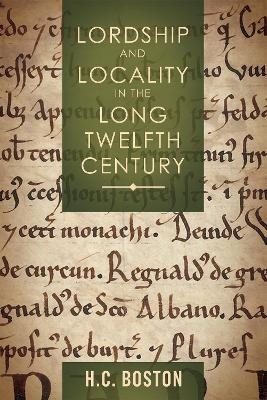
Lordship and Locality in the Long Twelfth Century
Seiten
2024
The Boydell Press (Verlag)
978-1-78327-783-4 (ISBN)
The Boydell Press (Verlag)
978-1-78327-783-4 (ISBN)
A new perspective on lordship in England between the Norman Conquest and Magna Carta.
Multiple lordship- that is, holding land or owing allegiance to more than one lord simultaneously- was long regarded under the western European "feudal" model as a potentially dangerous aberration, and a sign of decline in the structure of lordship. Through an analysis of the minor lords of Leicestershire, Derbyshire, and Staffordshire during the long twelfth century, this study demonstrates, conversely, that multiple lordship was at least as common as single lordship in this period and regarded as a normal practice, and explores how these minor lords used the flexibility of lordship structures to construct localised centres of authority in the landscape and become important actors in their own right.
Lordship was, moreover, only one of several forces which minor lords had to navigate. Regional society in this period was profoundly shaped by overlapping ties of lordship, kinship, and locality, each of which could have a fundamental impact on relationships and behaviour. These issues are studied within and across lords' honours, around religious houses and urban areas, and in a close case study of the abbey of Burton-upon-Trent. This book thus contextualises lordship within a wider landscape of power and influence.
Multiple lordship- that is, holding land or owing allegiance to more than one lord simultaneously- was long regarded under the western European "feudal" model as a potentially dangerous aberration, and a sign of decline in the structure of lordship. Through an analysis of the minor lords of Leicestershire, Derbyshire, and Staffordshire during the long twelfth century, this study demonstrates, conversely, that multiple lordship was at least as common as single lordship in this period and regarded as a normal practice, and explores how these minor lords used the flexibility of lordship structures to construct localised centres of authority in the landscape and become important actors in their own right.
Lordship was, moreover, only one of several forces which minor lords had to navigate. Regional society in this period was profoundly shaped by overlapping ties of lordship, kinship, and locality, each of which could have a fundamental impact on relationships and behaviour. These issues are studied within and across lords' honours, around religious houses and urban areas, and in a close case study of the abbey of Burton-upon-Trent. This book thus contextualises lordship within a wider landscape of power and influence.
HANNAH BOSTON is a Leverhulme Early Career Fellow in the School of Humanities and Heritage, University of Lincoln, UK.
Introduction
1. Multiple lordship: A quantitative analysis
2. Multiple lordship and the honour
3. Multiple lordship and religious patronage
4. Multiple lordship and urban centres
5. The Abbey of Burton-upon-Trent: A case study
Conclusion
Bibliography
Index
| Erscheinungsdatum | 21.12.2023 |
|---|---|
| Zusatzinfo | 14 Maps |
| Verlagsort | Woodbridge |
| Sprache | englisch |
| Maße | 156 x 234 mm |
| Gewicht | 492 g |
| Themenwelt | Geschichte ► Allgemeine Geschichte ► Mittelalter |
| Geisteswissenschaften ► Geschichte ► Regional- / Ländergeschichte | |
| ISBN-10 | 1-78327-783-1 / 1783277831 |
| ISBN-13 | 978-1-78327-783-4 / 9781783277834 |
| Zustand | Neuware |
| Haben Sie eine Frage zum Produkt? |
Mehr entdecken
aus dem Bereich
aus dem Bereich
eine neue Geschichte des Mittelalters
Buch | Hardcover (2023)
C.H.Beck (Verlag)
38,00 €


